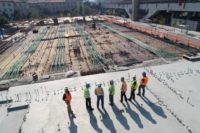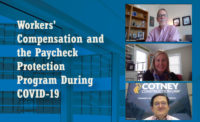As we navigate this evolving COVID-19 pandemic together, we are facing challenging conditions which will impact how all of us in the construction, installation, property management and maintenance sectors deliver services.
The health and well-being of workers should be at the forefront of our efforts. That said, the key is making every reasonable effort to cooperate to establish and promote safe workplace procedures.
Clearly, it will not be business as usual. At least, not for the foreseeable future. But all professionals must be dedicated to maintaining and delivering the professional services and client support that have been hallmarks of our mutual success.
The following are guidelines which, if followed, are intended to help make for a safe work environment for everyone’s project personnel:
A SITUATIONAL OVERVIEW
Recently, New York’s Governor Cuomo signed Executive Order 202.6, which includes construction trades as an “essential” activity, allowing essential construction work to proceed. This Executive Order recognizes the importance of our work, along with the folks at the MTA, Con Ed and the local butcher shop. We’re essential to our community fabric.
At the same time, Illinois’ Governor JB Pritzker signed COVID-19 Executive Order No. 8. Which includes construction as a part of “Essential Infrastructure” (para. 9), and incorporating the construction building trades as “critical trades” and “essential businesses” (Para. 12 h).
At these critical crossroads, it is clear that ongoing construction, building and maintenance are deemed essential and that all of us must play significant roles in supporting this mission.
SAFE WORKPLACE – Steps we all can take
The following efforts are essential to protecting our tradesmen and tradeswomen, allowing them to do their part in this campaign to save America.
While we’re long accustomed to working with protective head gear, eyewear and vests, it is recommended that construction site operations include:
- Site safety teams taking and recording the body temperature of all personnel entering worksites;
- Site managers coordinating the scheduling of different trades to avoid crowding in freight elevators and on the worksite floors to implement social distancing of at least six feet;
- Designating (with signage, tape or by other means) six-foot spacing for tradesmen and tradeswomen to maintain appropriate social distancing;
- Contractors providing personal hand washing stations with soap, hand sanitizer and sanitizer products readily available for employees and visitors; and
- Contractors regularly cleaning high-touch surfaces
We must all be seriously committed to keeping worksites safe, secure, and productive.
GETTING TO THE JOB
While many are accustomed to using public transportation to get to and from work from time to time, it is likely there may be accommodations to consider. For example, installers may have to use company vehicles and private cars to get to sites as public transportation with large crowds may still be recommended to avoid in the upcoming months.
In addition, contractors and those they work for will have to be patient and understand that there may be workers who are unable to safely leave their homes due to compromised physical conditions or responsibilities at home. Such as school and daycare closures requiring parents to stay home.
The ultimate goal is to get the work done professionally. Yet, we are living in times that require adaptations. Schedules may not be able to be met for various reasons including those listed above. However, by collaborating with compassion and patience, the work will get done. This requires increased teamwork as we in the trades work to keep the wheels of this important economic sector turning.
Daniel C. Venet is the Executive Vice President of CHB Industries.






Report Abusive Comment